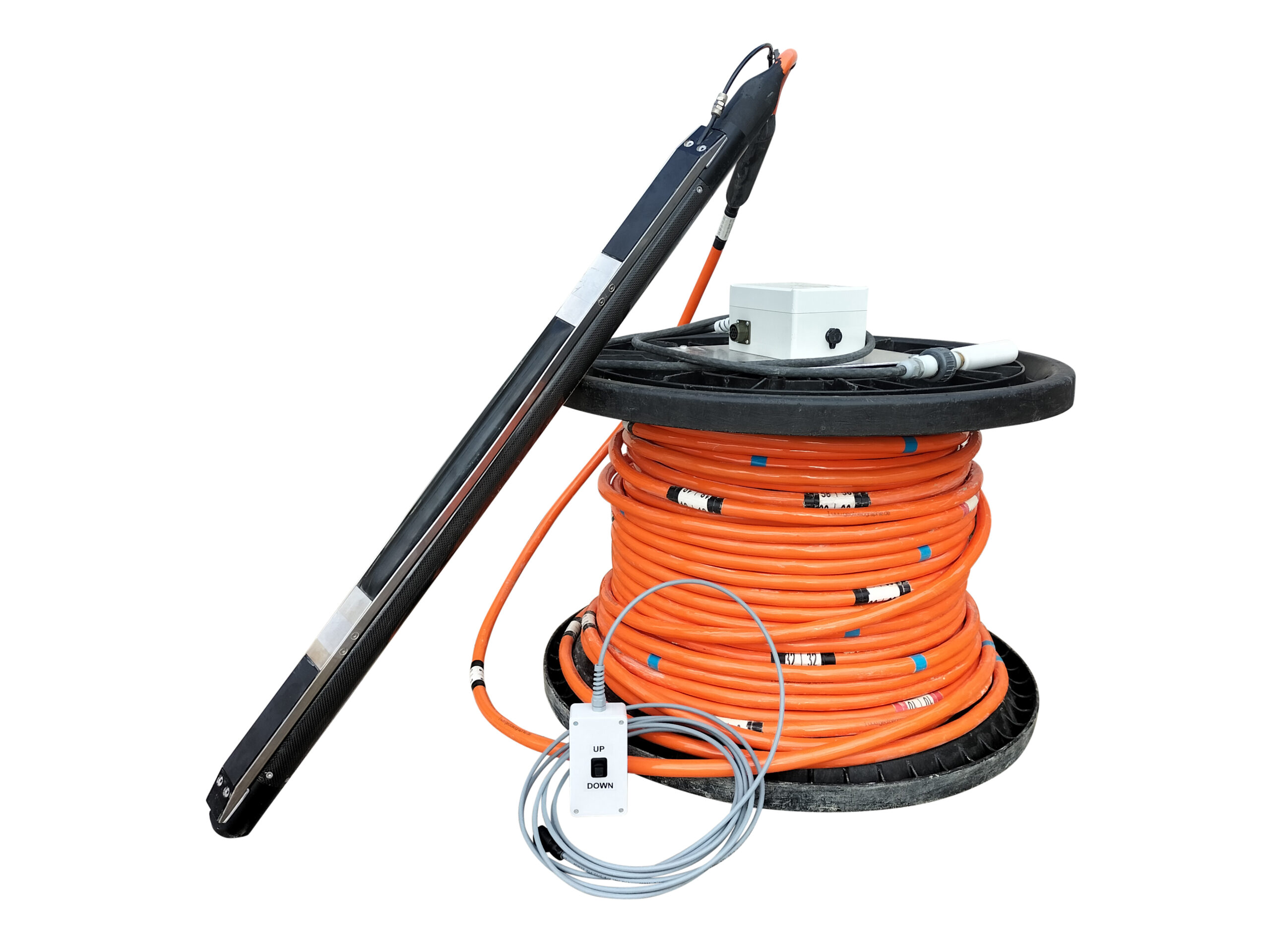The Dual Downhole System (DDS) is used to receive P- and S-waves in dry and water filled boreholes in order to determine interval velocities. The DDS consists of two stations each equipped with tri-axial sensors. The stations are mechanically connected to each other to ensure the alignment of all horizontal sensors. Both stations are coupled to the borehole wall by a pneumatic clamping system (inflatable bladder). Air is supplied to the DDS through an electro-pneumatic hybrid cable with a Kevlar tension string. A magnetic compass shows azimuthal deviation to North and can be used to get the orientation of the DDS in the borehole. The cable is terminated by a connector to the seismograph.
Technical Details
| Natural sensor frequency: | 28 Hz (others on request) |
| Sensor arrangement: | Tri-axial |
| Operational depth: | 100 m |
| Number of stations: | 2 |
| Station interval: | 2 m |
| Station length: | 620 mm |
| Station diameter: | 65 mm |
| Station weight: | 2.5 kg |
| Cable weight per metre: | 145 g |
| Cable strength: | 2150 N |
| Borehole diameter: | 75 mm |
| Clamping system: | Inflatable bladder |
| Orientation: | Magnetic compass (+/-2.5°) |
| Depth indicator: | Cable marking every 2 m |
| Connector: | To any seismograph |
| Storage: | On drum |
DOWNLOAD PRODUCT BROCHURE
Manufactured by Geotomographie GmbH
Technical Details
Generated wave types: SV
Signal frequencies: Up to 500 Hz (depending on geology and borehole distance)
Operational depth: Up to 100 m
Source length: 1015 mm
Source weight: 6 kg
Cable weight per metre: 377 g
Borehole diameter: 75-100 mm (or larger if spacers are used)
Clamping system: Infatable bladder
Depth indicator: Cable marking every 2 m
Connector: To impulse generator IPG800 or IPG5000
Storage: On drum
Switch box: Switch between two vertical shot directions

